May 28, 2025 | 22:53 GMT +7
May 28, 2025 | 22:53 GMT +7
Hotline: 0913.378.918
May 28, 2025 | 22:53 GMT +7
Hotline: 0913.378.918
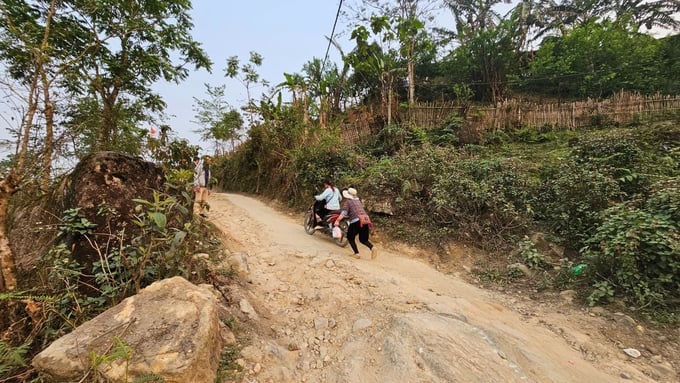
Road to Hoang Lien forest. Photo: Hoang Anh.
Summer in Sapa comes early. The season is just at its start, but the coolness in the air no longer feels the same. The towns in the mist feel hotter, perhaps partly because the present Sapa is too crowded. People say that it’s because of climate change, but it seems that “human change” is progressing much faster.
The headquarter of Hoang Lien National Park lies on a hill, surrounded by restaurants, hotels and resorts. This feeling of frustration prompts us to leave the town center and begin our journey to discover the core of Hoang Lien forest - one of the first four ASEAN Heritage Parks of Vietnam.
The pickup truck slowly climbed the steep while swaying nonstop, as if we were driving toward the sky. Not long after we got on the truck, Mr. Nguyen Duy Thinh, Deputy Director of Hoang Lien National Park, opened a conversation “My root is in Khoai Chau, Hung Yen, but I was born here. Half of my life is attached to the Northwest, to the forest. I thought I understood all of Hoang Lien at some point, but I was wrong. The green forest still has too many mysteries and values waiting for humans to explore”.
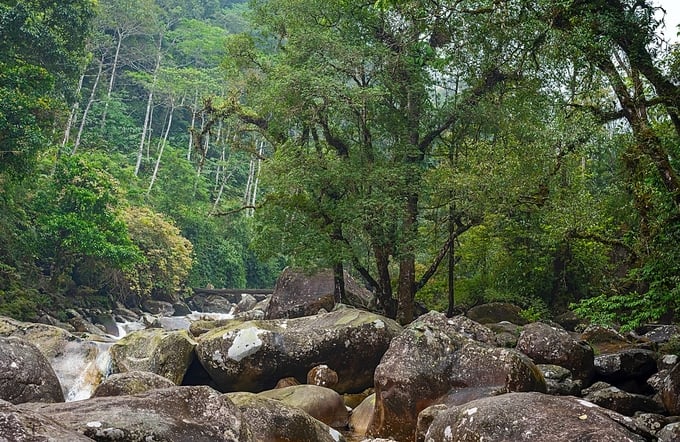
The beauty of Hoang Lien forest. Photo: Hoang Lien National Park.
This is the majestic Hoang Lien Son mountain range with 28,500 ha of forest, where Hoang Lien National Park is located. The mountain rage streches to the territories of Hoang Lien, Ta Van, Ban Ho communes of Lao Cai province and Phuc Khoa, Trung Dong communes of Lai Chau province. As journalists, we have set foot on almost every land in Vietnam. We have climbed to the top of Fansipan many times, experiencing the beauty of the mountains and rivers with our own eyes. But coming to Hoang Lien this time, we were still amazed. With each mountain, forest, or stream we crossed, we were able to see the endemic species of flora and fauna so unique that other ecosystems could hardly compare.
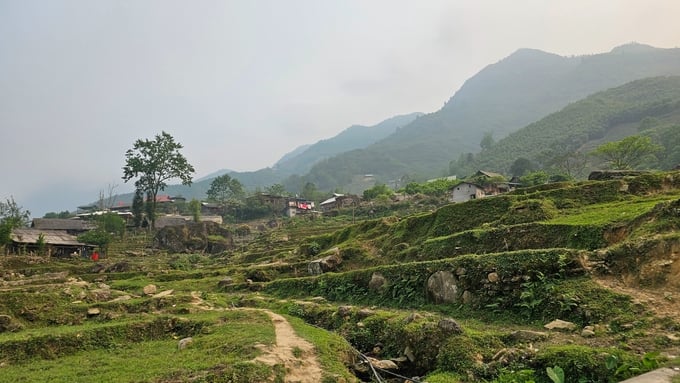
Ethnic village in the buffer zone of Hoang Lien National Park. Photo: Hoang Anh.
Stopping on Ta Van, the core area of Hoang Lien, we saw Muong Hoa valley down below, and from afar the Fansipan peak. The rhododendrons were blooming. “This Hoang Lien forest is home to the most naturally growing rhododendrons, with more than 30 species recorded so far. Going to Fansipan this season, whether taking the cable car or climbing, you can see the blooming rhododendron forest and red in the sky.
Thinh briefly mentioned some of Hoang Lien's biodiversity, his face could not hide his pride. The garden has Fansipan flora with characteristics of subtropical and temperate plant elements of 3 streams: Yunnan - Himalaya, North Vietnam - South China and India - Malaysia flora. Currently, there are 2,847 species of vascular plants belonging to 1,064 genera and 229 families.
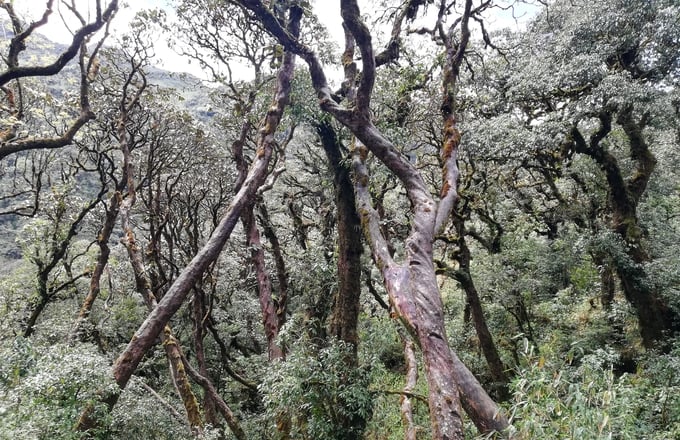
The population of rough-branches Rhododendrons, the heritage trees in Hoang Lien.
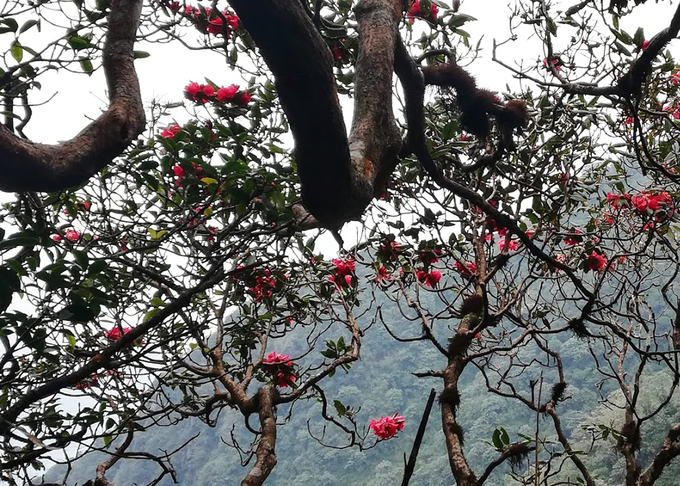
Rhododendron blooms in the middle of Hoang Lien forest.
If national parks are considered ‘green treasures’ of Vietnam, Hoang Lien would be the most precious among all. To put it briefly, Hoang Lien has 147 plant species mentioned in the Red Book, and out of every 100 endemic plant species in our country, 25 species are located here. Hoang Lien is truly a unique treasure of forest tree genes.
In that treasure there are also 555 species of terrestrial vertebrates, including 96 species of mammals, 346 species of birds, 63 species of reptiles and 50 species of amphibians. Among them, there are 60 species of animals in the red book, 33 species in the red list of the International Union for Conservation of Nature and Natural Resources (IUCN). It’s no surprise that the WWF and the IUCN put Hoang Lien on the list of inviolable, the highest class A in terms of biodiversity value, and ranked first in Vietnam's special-use forest system.

Big-headed turtle in Hoang Lien. Photo: Hoang Lien National Park.
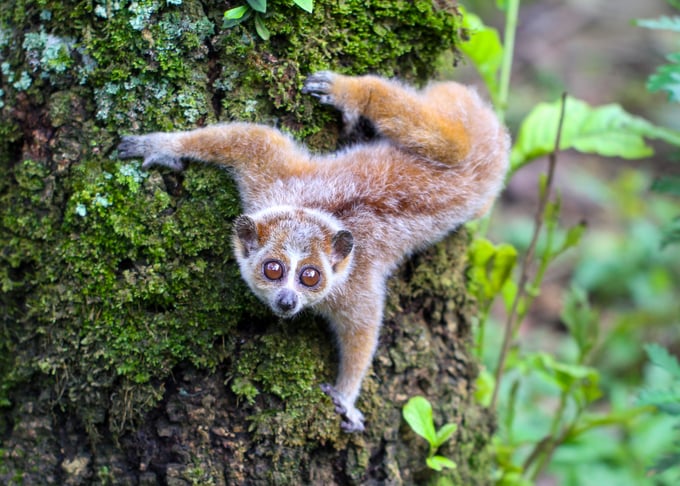
Loris in Hoang Lien National Park. Photo: Hoang Lien National Park.
Half in jest, the ranger who conduct scientific research in Hoang Lien told us, “Preserving the great treasure is even harder than taking care of my wife and children”.
Take Fansipan spruce for example. The tree has been listed in the Red Book of Vietnam since 1996. Its beauty and rarity are beyond question. This tree only appears near the top of Fansipan, nowhere else in the world. The whole forest is so vast, but there are only 26 individuals of Fansipan spruce with an age of around 50 years.
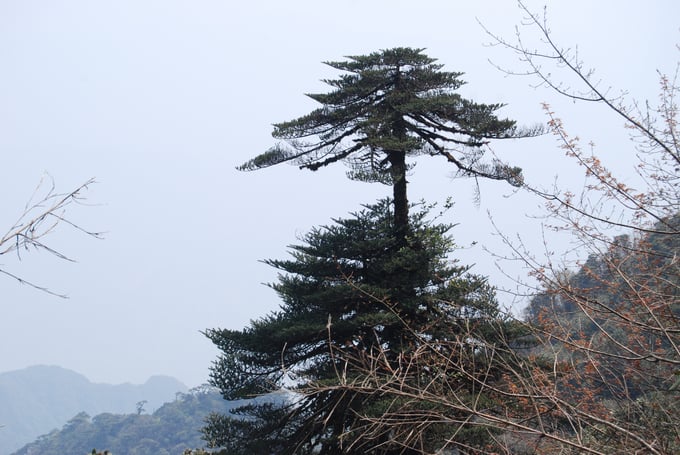
Fansipan spruce tree, a heritage tree only found in Hoang Lien forest. Photo: Hoang Lien National Park.
A few decades ago, when Hoang Lien National Park was just a nature reserve, the image of Fansipan spruce was chosen as the symbol. As the years go by, the tree’s bravery against snow storms is still an everlasting value. This is such a strange tree that the world Red List ranks Fansipan spruce as “highly endangered” with an extremely high risk of extinction.
The reason is that the regeneration ability of this tree is very poor. Over the past 20 years, generations of scientific staff of Hoang Lien have diligently monitored and researched, countless times "climbing the Fans" but have not been able to detect any regenerated tree in the wild. Only recently, some Fansipan spruce trees have begun to be propagated, although not yet a complete success, people who quietly study the tree at an altitude of more than 2,000 m are still happy.

Research on plant varieties in Hoang Lien National Park. Photo: Hoang Anh.
The Deputy Director of Hoang Lien National Park looked out and pondered. “An invisible treasure of the mountains is slowly but surely awakened. A big and imperative mission, impossible not to do. The forest is likened to a treasure blessed by nature, but people also need to think of ways to make money from that treasure. To put it bluntly, if you want to protect and develop forests, if you want to preserve the value of invaluable resources, you must have money, strategies and policies, otherwise it's just a matter of theory”.
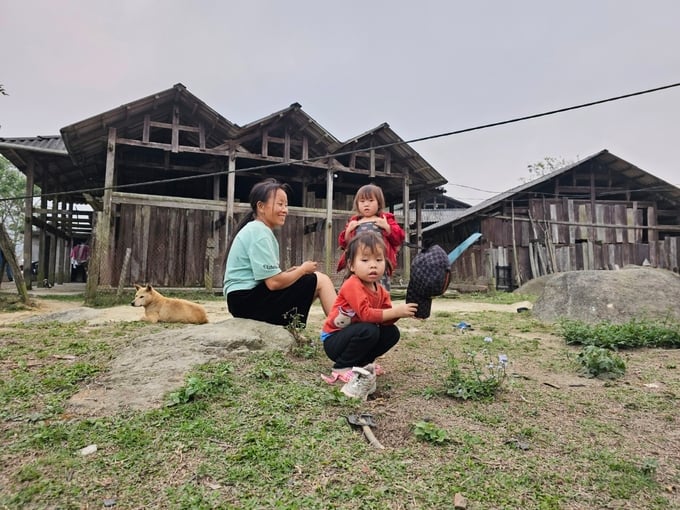
People's life in the core zone of Hoang Lien National Park. Photo: Hoang Anh.
In fact, since the time "the cable car with two world records" to the top of Fansipan went into operation seven years ago, each year the national park has received more than VND 7 billion in rent for forest environment. Tourist routes to conquer Fansipan peak along many different routes have also been put into operation, opening up new paths for Hoang Lien National Park’s forest protection and development efforts.
According to statistics, there are still more than 2,500 households in the core area of Hoang Lien. The Mong, Giay, and Dao people have been present in the forest for thousands of years. They are the culture, the identity of the forest, but also the threat to the forest.
It’s difficult to attain harmony between people's lives and forest protection - development. Tens of thousands of people live in the middle of the forest, the land for production is meager, the livelihood is difficult, most of them are poor households. For them, getting food on the table is hard enough already, let alone talking about keeping the forest alive.

Planting Hoang Sin Co yacón in Ban Ho. Photo: Hoang Anh.
The only solution is to create livelihoods and support policies for the people. The “Hoang Lien National Park Eco-tourism, Resort and Entertainment Scheme, period 2020 - 2030, vision to 2050” is built for that purpose. The project developers at Hoang Lien, after many years of accumulation and research, have drawn three key tasks.
The first is to attract business resources to invest in ecotourism projects so that they can collect rents for the forest environment. Next is to grow medicinal plants under the forest canopy. In Ban Ho commune, a model of livelihood development has been piloted for the local people. The third key lies within cultural tourism and humanistic tourism. Hoang Lien's treasure is now not only a forest, a landscape but also a custom, a festival in the clouds and typical handicraft products of the highland people.
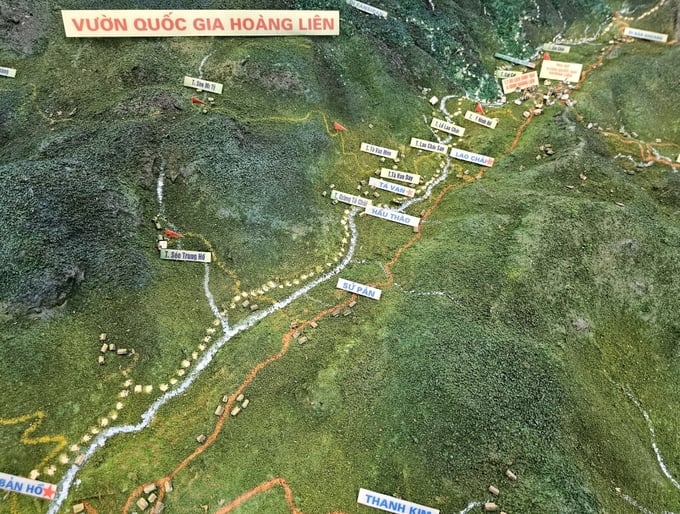
Overview of Hoang Lien National Park Eco-tourism, Resort and Entertainment Scheme. Photo: Hoang Anh.
Den Thang and Seo My Ty are two Hmong villages located the deepest in the core area of Ta Van commune of Hoang Lien forest, more than 20 kilometers from the commune center. The fellow rangers led us to the duty post of the community forest protection group to meet "Father Bau", ie Mr. Hau A Bau.

Father Bau. Photo: Hoang Anh.
62 years old, but the man still looks full of the virility of a typical Hmong. Regularly climbing the forest 3 times a month, each trip 3-4 days, it is the common work of the leader of the Den Thang community forest protection group. Father Bau leads Den Thang's 15-person forest protection team, including the Party secretary, village chief, police officer and healthy people well-versed in the terrain of Hoang Lien mountains and forests. This model seems to have been dated back to the 2010s.
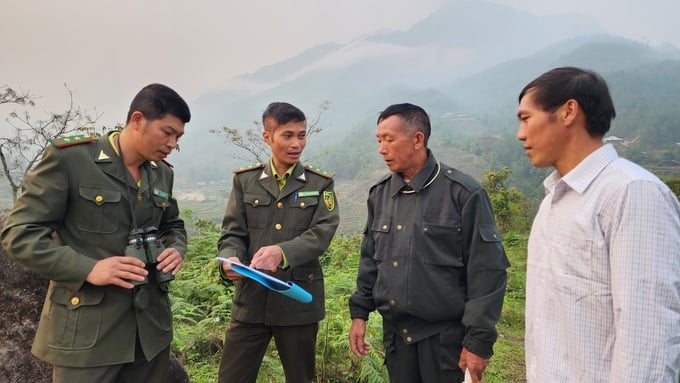
The model of community forest contracting is very effective in Hoang Lien. Photo: Hoang Anh.
That year, there was a huge forest fire in Seo My Ty and Den Thang. Lao Cai province mobilized all forces to participate but still could not control the fire because of the continuous fires in the high mountains. While the team was struggling to find a way, a young Hmong who spoke in his native language, whirling his hands. When the interpreter came and asked, the young man told them to hire him and he would put out the fire. “How much? 600 thousand dong only. How many people do you need? Just 10. How long does it take to put down the fire? 1 hour”. All of them were skeptical at first, but they could not believe that less than an hour after the fire on the mountain was fully controlled.
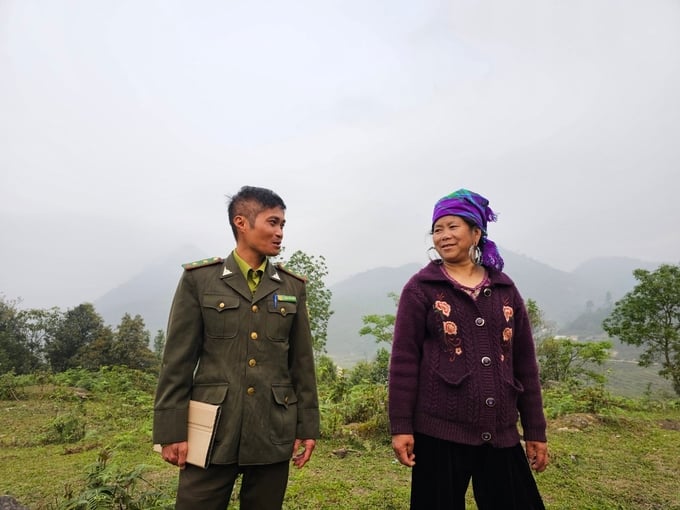
Forests are protected only when people are secure in terms of interests. Photo: Hoang Anh.
That story partly suggested many ideas about forest protection and development in Hoang Lien. Only when people come to an agreement and enjoy real benefits can they keep the forest. In 2012, Lao Cai implemented a policy of payment for forest environment services. The revenue from this amount is provided to the participating communities, currently not less than VND 10 billion per year. In the area managed by Hoang Lien National Park, there are about 21 contracted communities. All 2,500 households in the core area participate and receive payments to support the forest protection work.
Although the current regime of about VND 600,000/ha/year is still quite low, thanks to this funding source, the people have become the eyes and ears of the national park. And since then there has been no terrible Hoang Lien forest fire. There are cases here and there sometimes, people would quickly report to the authorities, but normally when they arrive, the community forest protection groups have already finished handling the situation.
Before parting ways, Father Bau tried to keep us to attend the forest worshiping ceremony of the Mong people in Den Thang. It is an ancient traditional holiday of the people that takes place on days with the number 3 in the month. In recent years, when performing a ceremony, in addition to praying for favorable weather and health, Den Thang people also ask the high beyond to make the forest lush with life with each passing day.
Translated by Samuel Pham
/2025/05/25/4127-3-073637_820.jpg)
(VAN) Thanks to the promotion from an FAO-implemented project, vegetable production in greenhouses in Moc Chau has seen strong development, from 1.5 hectares in 2021 to nearly 50 hectares in 2024.

(VAN) FAO has recently supported USD 140,000 to implement the project 'Risk mitigation human-animal interface risks through disease control initiatives in pig farming.'

(VAN) The People's Committee of Tra Vinh province has approved an adjustment to the investment policy for the Green Hydrogen Plant project, increasing its area to approximately 52.76 hectares.
![Reducing emissions from rice fields: [2] Farmers’ commitment to the soil](https://t.ex-cdn.com/nongnghiepmoitruong.vn/608w/files/news/2025/05/05/dsc08881jpg-nongnghiep-140632.jpg)
(VAN) Clean rice cultivation model in Thuong Tan commune, Bac Tan Uyen district, is assisting local residents in achieving sustainable agriculture by substantially reducing costs, increasing productivity, and protecting the environment.

(VAN) At the conference to disseminate Resolution No. 68, AgriS introduced its digital agricultural ecosystem and reaffirmed its commitment to accompanying the Government in promoting private sector development and sustainable agriculture.

(VAN) 'Blue Ocean - Blue Foods' initiative is designed to restore marine ecosystems and establish sustainable livelihoods for local communities by cultivating a minimum of 1,000 hectares of cottonii seaweed in the first three years.
/2025/05/21/4642-3-112707_603.jpg)
(VAN) The V-SCOPE project has made direct contributions to three out of six pillars of the Comprehensive Strategic Partnership between Vietnam and Australia.